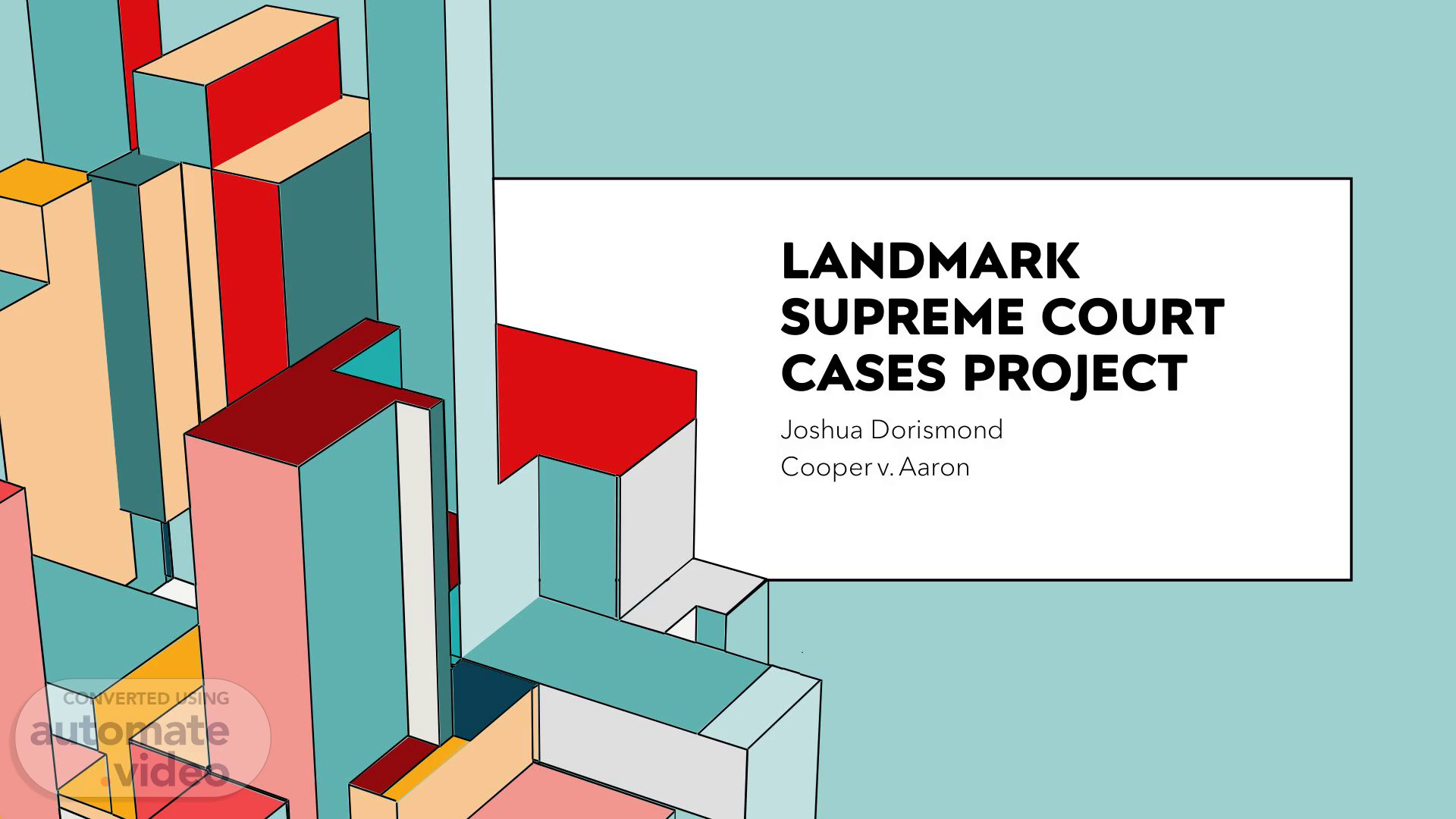Scene 1 (0s)
[Audio] 6.53 LANDMARK SUPREME COURT CASES PROJECT Joshua Dorismond Cooper v. Aaron.
Scene 2 (9s)
[Audio] HOW DOES A CASE GET TO THE SUPREME COURT? Cases reach the Supreme Court through a process involving several stages. Here is a general overview of how a case can make its way to the U.S. Supreme Court – Trial Court, Apellate court, petition for certiorari, granting certiorari, briefs and orals arguments, deliberation and decision, and opinions and precedent. 7/1/20XX Pitch deck title 2.
Scene 3 (39s)
[Audio] WHAT IS A "LANDMARK" DECISION? 7/1/20XX Pitch deck title 3 A landmark decision refers to a legal ruling or judgment that significantly impacts the interpretation of laws or sets a precedent for future cases. These decisions are often considered pivotal and have farreaching implications for the legal system or society as a whole. Landmark decisions can come from various levels of the judicial system, including trial courts, appellate courts, and supreme courts..
Scene 4 (1m 13s)
[Audio] HOW DOES THE COURT MAKE ITS DECISIONS? 7/1/20XX Pitch deck title 4 The process through which a court reaches a decision can vary based on the legal system, jurisdiction, and the level of the court. However, there are some general principles and steps involved in the decisionmaking process like the case presentation and pleadings and motions..
Scene 5 (1m 39s)
[Audio] HOW DOES A SUPREME COURT RULING AFFECT EXISTING AND FUTURE LAWS AND PROCEDURES? 7/1/20XX Pitch deck title 5 A Supreme Court ruling can have significant and farreaching effects on existing and future laws and procedures. The impact of a Supreme Court decision is particularly noteworthy because it sets a precedent that lower courts are generally expected to follow. Here's how a Supreme Court ruling can affect the legal landscape.
Scene 6 (2m 11s)
[Audio] KEY TERMS IN THIS CASE ! 7/1/20XX Pitch deck title 6 Cooper v. Aaron (1958) is a landmark Supreme Court case that dealt with the issue of desegregation in public schools and the authority of federal courts to enforce their decisions. The key terms and concepts in this case include Desegregation, Executive Authority, Integration, and Interposition..
Scene 7 (2m 40s)
[Audio] WHO WERE MAIN INDIVIDUALS? 7/1/20XX Pitch deck title 7 "Cooper v. Aaron" (1958) involved several key individuals, both as plaintiffs and defendants. The case arose from the efforts to desegregate public schools in Little Rock, Arkansas, following the landmark decision in "Brown v. Board of Education" (1954). Here are some of the important individuals in the case.
Scene 8 (3m 11s)
[Audio] INDIVIDUALS PT2 7/1/20XX Pitch deck title 8 The "Little Rock Nine" refers to the group of African American students who were at the center of the desegregation efforts in Little Rock. They were: Ernest green, Elizabeth eckford, Jefferson Thomas, Terrence roberts, Carlotta walls Lanier, minnijean brown, Gloria ray Karlmark, Thelma mothershed, and Melba patillo beans..
Scene 9 (3m 42s)
[Audio] WHAT WERE ISSUES THAT SURROUNDED THIS CASE? 7/1/20XX Pitch deck title 9 The case emerged from the broader context of efforts to implement the Supreme Court's decision in "Brown v. Board of Education" (1954), which declared state laws establishing separate public schools for black and white students to be unconstitutional. Here are the key issues that surrounded the "Cooper v. Aaron" case. The central issue was the desegregation of public schools in Little Rock, Arkansas. The case arose after the Little Rock School Board adopted a plan to gradually integrate Central High School, but faced resistance from state officials and local opposition..
Scene 10 (4m 29s)
[Audio] SUMMARY 7/1/20XX Pitch deck title 10 The outcome of "Cooper v. Aaron" (1958) was a unanimous decision by the Supreme Court of the United States. The case addressed the issue of desegregation in public schools and the resistance to federal court orders by Arkansas officials, particularly Governor Orval Faubus. The decision, rendered on September 29, 1958, had several key components.
